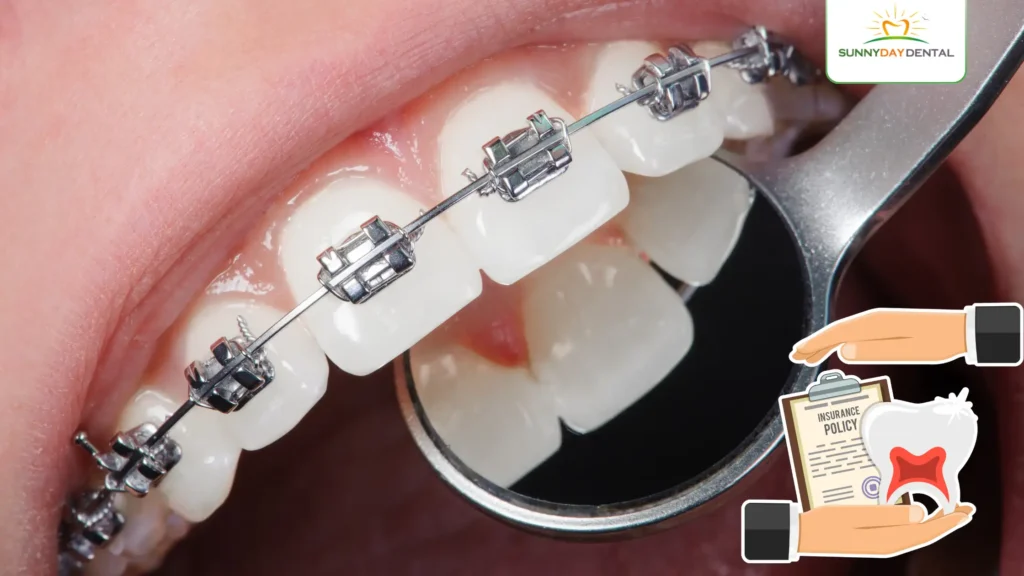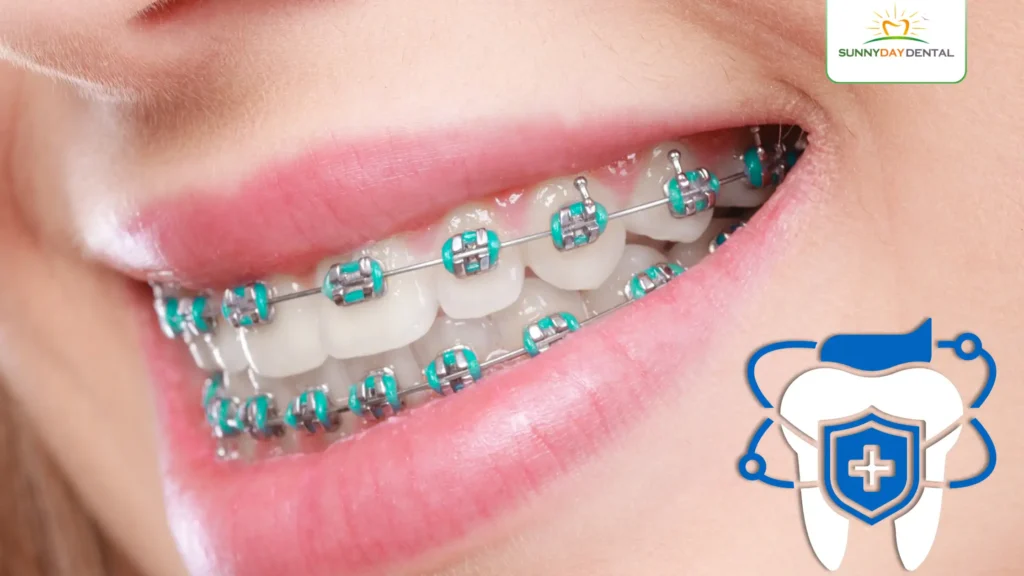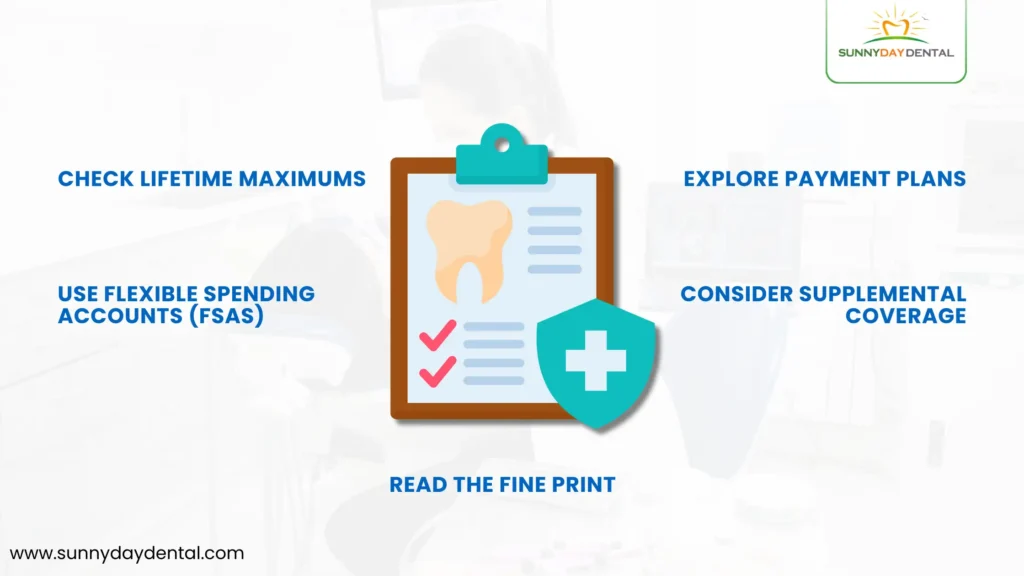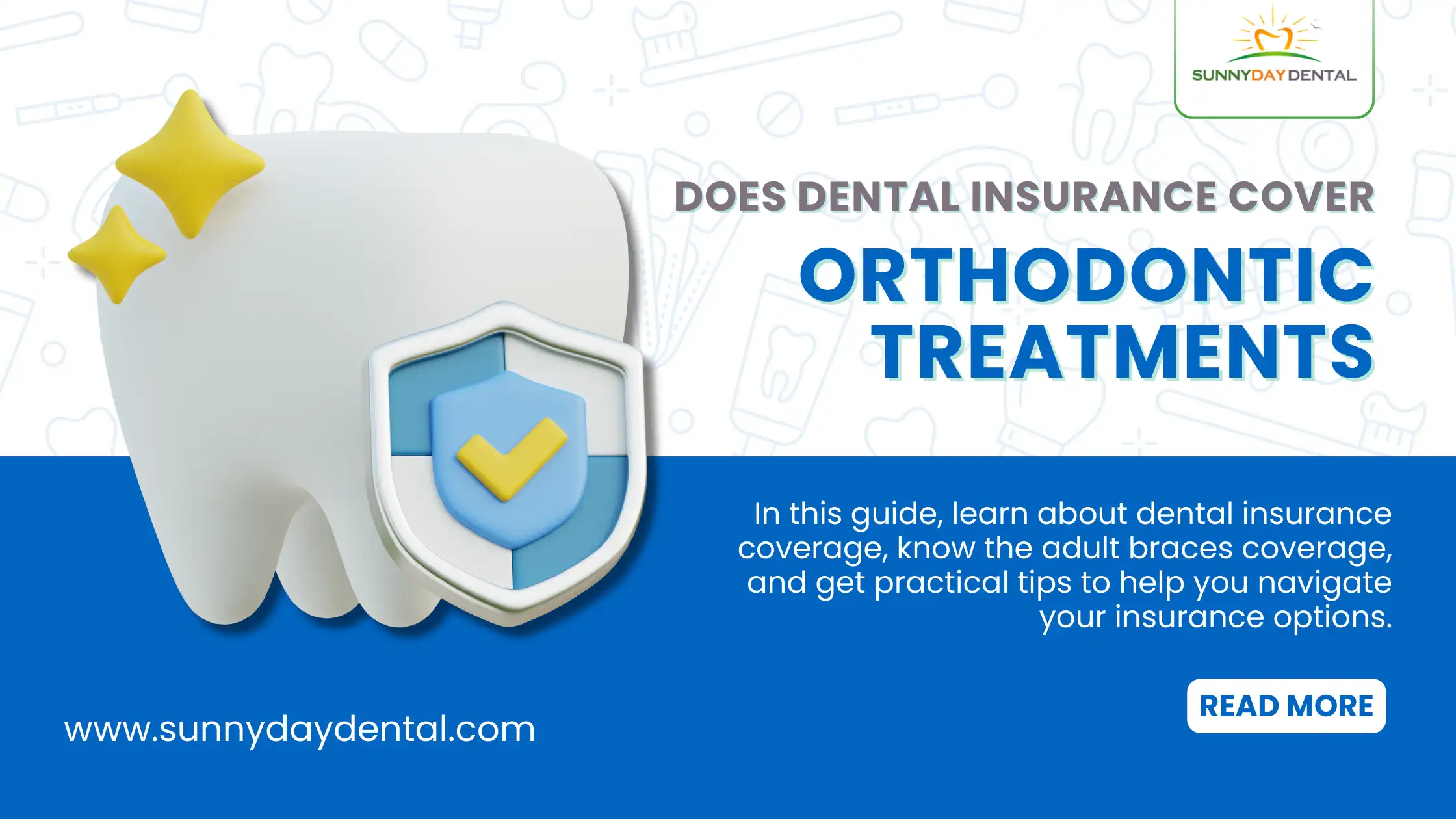When it comes to achieving a confident, healthy smile, one common concern arises: Will my dental insurance cover orthodontic treatment? Whether you’re considering braces for yourself or your child, understanding your orthodontic dental insurance coverage can help you avoid unexpected costs and stress.
Table of Contents
ToggleOrthodontic care isn’t just about appearance—it plays a crucial role in maintaining oral health, preventing future dental problems, and boosting self-confidence. In this guide, learn about dental insurance coverage, know the adult braces coverage, and get practical tips to help you navigate your insurance options.
What is Orthodontic Dental Insurance?

It is a type of coverage that helps manage the costs of treatments like traditional metal braces, clear aligners such as Invisalign, and retainers. However, dental insurance coverage is often considered an add-on and might not be included in basic dental insurance plans by default.
For adults, orthodontic treatments are often viewed as elective procedures, which can limit the extent of coverage. In contrast, insurance plans are generally more generous with coverage for children’s orthodontic care.
Are Adult Braces Covered by Insurance?

In 2024, adult dental insurance coverage remains a mixed bag. Historically, dental insurance has prioritized children’s braces, but with increasing numbers of adults opting for orthodontic care, some plans have adapted to include adult braces and clear aligners.
Typically, orthodontic dental insurance for adults might cover part of the treatment cost, but plans often come with a lifetime maximum benefit for orthodontics, usually ranging between $1,000 and $3,000. Since the total cost for braces or Invisalign often exceeds this cap, it’s essential to review your policy carefully.
Factors That Influence Orthodontic Insurance Coverage
- Age Limits: Many plans offer full coverage for children up to a certain age (often 18 or 19). Adult coverage might be limited or come with higher out-of-pocket costs.
- Waiting Periods: Insurance plans often impose a waiting period (6–12 months) before orthodontic benefits become active.
- Network Providers: If you’re searching for an Orthodontist in Woodbridge, make sure they are part of your insurance network, as out-of-network providers might not be fully covered.
How is the Cost Decided for Orthodontic Treatment
Several factors contribute to the total cost of orthodontic care:
- Type of Treatment: Traditional braces are generally less expensive than clear aligners like Invisalign.
- Duration of Treatment: Longer treatment plans mean higher costs.
- Geographic Location: Costs can vary based on your region. Dental Insurance in Canada may differ significantly from those in other countries.
- Complexity of the Case: Severe orthodontic issues typically require more resources and time, increasing overall expenses.
How to Find the Right Orthodontic Insurance Plan in Canada
For Canadian residents, choosing the right orthodontic dental insurance can significantly reduce your expenses. While some provinces offer government-funded dental plans for children, adults typically need private insurance for orthodontic treatments.
Here’s how to find the right plan:
- Review Your Current Policy: Check if orthodontic care is included and whether adult treatments are covered.
- Compare Plans: Get multiple quotes and compare factors like coverage limits, waiting periods, and out-of-pocket expenses.
- Consult Your Orthodontist in Woodbridge: Speak with professionals like Sunny Day Dental for insights on the most compatible insurance providers.
Dental Insurance in Canada can vary widely in terms of coverage levels and waiting periods, so it’s essential to carefully compare policies before making a decision.
Types of Orthodontic Insurance Plans in Canada
- Basic Dental Insurance: Typically covers preventive care and minor dental procedures but rarely includes orthodontics.
- Major Dental Insurance: Covers a broader range of treatments and may partially include orthodontic care.
- Comprehensive Dental Plans: These plans provide the most extensive coverage, including braces and clear aligners, making them the best choice for orthodontic treatments.
Smart Tips for Selecting the Right Dental Insurance for Orthodontic Treatments

- Check Lifetime Maximums: Orthodontic plans often have a cap on lifetime benefits.
- Use Flexible Spending Accounts (FSAs): If available, FSAs can help reduce costs using pre-tax dollars.
- Explore Payment Plans: Many orthodontists offer financing options.
- Consider Supplemental Coverage: If your primary plan falls short, supplemental insurance might offer additional benefits.
- Read the Fine Print: Look for policy exclusions or restrictions.
Finding Adult Orthodontic Coverage
If you’re an adult exploring orthodontic treatments, your dental insurance plan might offer partial coverage. To ensure you’re making the right choice:
- Review your existing policy.
- Compare different insurance plans.
- Consult a trusted orthodontist in Woodbridge.
Final Takeaway
Understanding orthodontic dental insurance can feel overwhelming, but with the right knowledge, you can make informed decisions. Whether you’re exploring braces or Invisalign, having proper insurance coverage ensures that your journey to a perfect smile is smooth and affordable.
At Sunny Day Dental in Woodbridge, our expert team specializes in orthodontic treatments for both adults and children. We’ll help you navigate insurance options and maximize your coverage.
Contact us today to book your consultation!
FAQs About Orthodontic Dental Insurance
1. Does Canadian dental insurance cover adult braces?
Yes, while most basic dental insurance plans in Canada do not cover adult braces, comprehensive dental plans often offer partial coverage. Adults seeking orthodontic treatment should carefully review their policy details, including lifetime maximum benefits and any applicable waiting periods.
2. How long does orthodontic treatment last?
The duration of orthodontic treatment depends on the complexity of the case and the type of treatment chosen. On average, treatment can last between 18 months to 3 years. Regular visits to your orthodontist and following treatment instructions can ensure effective results.
3. Are clear aligners covered by insurance?
Yes, many dental insurance plans now offer partial coverage for clear aligners like Invisalign. However, the extent of coverage varies by provider. It’s essential to confirm with your insurance company whether Invisalign or other clear aligners are included in your orthodontic dental insurance policy.
4. How much do braces cost in Canada?
The cost of braces in Canada typically ranges from $3,000 to $8,000, depending on the type of braces, treatment duration, and complexity of the case. It’s a good idea to discuss cost estimates with your orthodontist beforehand.
5. Can I change orthodontists if they’re out of network?
Yes, you can switch orthodontists if your current provider isn’t in-network. However, you may need to manage and submit claims independently, which could involve additional administrative work.
6. Is Invisalign considered orthodontic treatment by insurance?
Yes, most insurance providers classify Invisalign as orthodontic treatment. However, the coverage amount and terms can differ, so checking with your provider is essential.
7. Can I get orthodontic coverage through supplemental dental plans?
Yes, supplemental plans can offer additional orthodontic coverage if your primary plan has limitations. These plans are often worth considering for comprehensive care.
8. Are there specific dental insurance plans for orthodontic care in Canada?
Yes, some insurance providers offer plans tailored specifically for orthodontic treatments. These plans typically provide more extensive coverage for braces, aligners, and follow-up care.


